Implementing Progressive Discipline
National Small Business Week
May 1-7 is National Small Business Week, and our May blog posts are all centered on tools and resources for small businesses. Today’s post is about disciplining employees using a system called progressive discipline. We hope this information helps you improve your business practices and, ultimately, your bottom line.
Progressive Discipline
Using a system of progressive discipline in reaction to poor performance or rule violations will help employers avoid employee legal claims (e.g., employment discrimination, sexual harassment, unemployment insurance and wrongful discharge) and improve staff performance and attitudes. Progressive discipline can also help you avoid unionization, as most unions typically point to unfair disciplinary actions to promote the benefits of unionization.
Discipline should result from conduct that either disregards the employer policies and procedures or fails to fulfill performance expectations. Disciplinary actions should be viewed by the employer as an effort to help the employee succeed, rather than as punishment.
Preparing for the Disciplinary Performance Discussion
Make sure your discussion is well-planned based on what you have learned about the problem, its likely causes, ways to correct it and the consequences of failure to correct it. The objective of the discussion is to correct substandard performance and a means to accumulate evidence for use if necessary in a future law suit. Your discussion should cover the following points:
- Background concerning the incident. What happened and why?
- Previous discipline. Is this an isolated incident or simply another incident in a string of previous problems?
- Proposed penalty. Does the penalty meet the sufficient warning requirements of the discipline policy?
- Precedent. What action has been taken with other employees for the same substandard performance or rule violation? If the proposed penalty is more severe, make sure you have documentation to show why.
- How do you plan to motivate the employee to improve performance?
Questions to Ask During Disciplinary Performance Discussion
The following are questions you should ask during the discussion:
- Do you know that the company has a rule or policy or a performance expectation concerning the behavior or lack of performance that is the cause for discussion? If the employee responds “no,” then the supervisor should review and discuss the rule or performance expectation. A clear and concise statement of the problem will help the employee understand the deficiency.
- Do you know what the policy or performance expectation is? Discussing the rule or performance expectation removes all doubt on what the policy is or how it is being interpreted.
- Are you aware that you violated a rule or are not meeting a performance expectation? Give the employee a chance to defend his or her actions. If the employee says “no,” explain why the employee has violated the rule or policy or is not meeting the performance expectations.
- Do you understand the consequences of failing to improve your behavior or performance in the future? If the employee answers “yes,” the supervisor should have the employee sign a statement (corrective action form) that contains the following four elements:
- Recognition of a rule or policy and agreement that the employee violated it;
- Indication that the employee understands the future consequences of continued unacceptable behavior or nonperformance;
- Commitment from the employee that he or she will try to abide by the rule or policy or a plan of performance improvement;
- Acknowledgement that another similar violation or continued substandard performance will indicate a lack of desire to follow the rules of the company and may result in further discipline, up to and including termination. A plan of remediation, if appropriate, should be developed.
A copy of the statement should be given to the employee and a copy placed in the employee’s personnel file. If you choose a less formal approach, make sure you document the employee’s personnel file, and provide the employee with a copy of the documentation. When the above process is followed the concept of punishment or discipline is replaced. It becomes the responsibility and choice of the employee to either follow the employer’s rules or improve performance and remain employed or to continue to violate the employer’s rules or performance expectations and terminate the employment relationship.
Questions an Employer Should Ask Before Termination
Terminations are the capital punishment of the workplace. When a termination decision is made based on an employee’s lack of performance, it should be supported based on an evaluation program that is well documented. Termination should rarely be a surprise to an employee. As a possible termination becomes more likely, the following should be considered:
- Has the employee received fair notice of employment standards?
- Is the rule, policy or performance expectation reasonable?
- Has the situation been reviewed or investigated fairly and objectively?
- Is there substantial proof that there has been a violation of company policy or performance expectation?
- Has the employee been given an adequate chance to improve?
- Has the employee been given assistance if necessary?
- Have the policies, rules and performance expectations been applied consistently?
- Do the evaluations support the decision to terminate?
- Was the employee given a reasonable period of time in which to correct the deficiencies before the adverse decision was put into effect?
- If the employee disagreed with an evaluation, was there a follow-up investigation or discussion regarding the employee’s comments?
